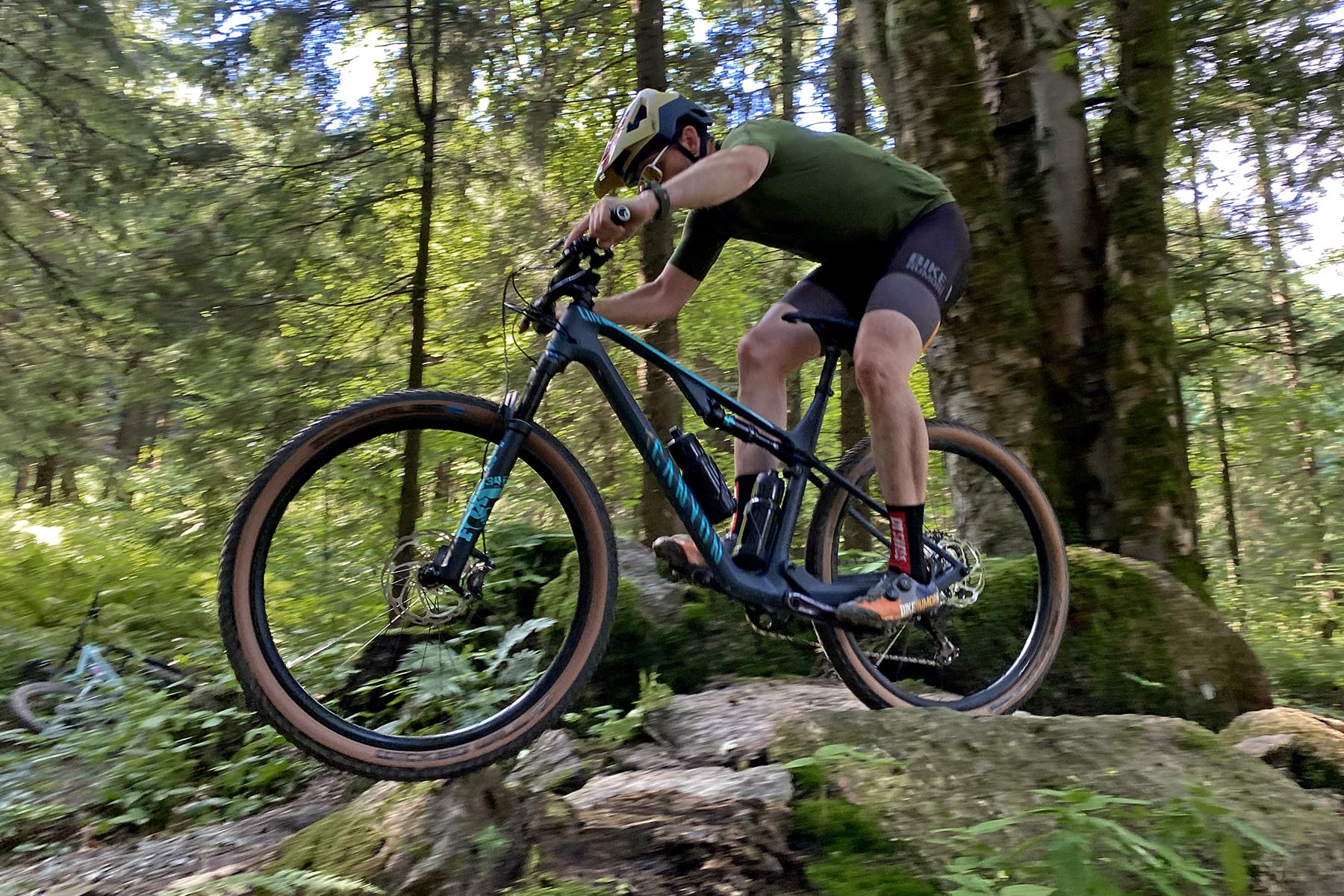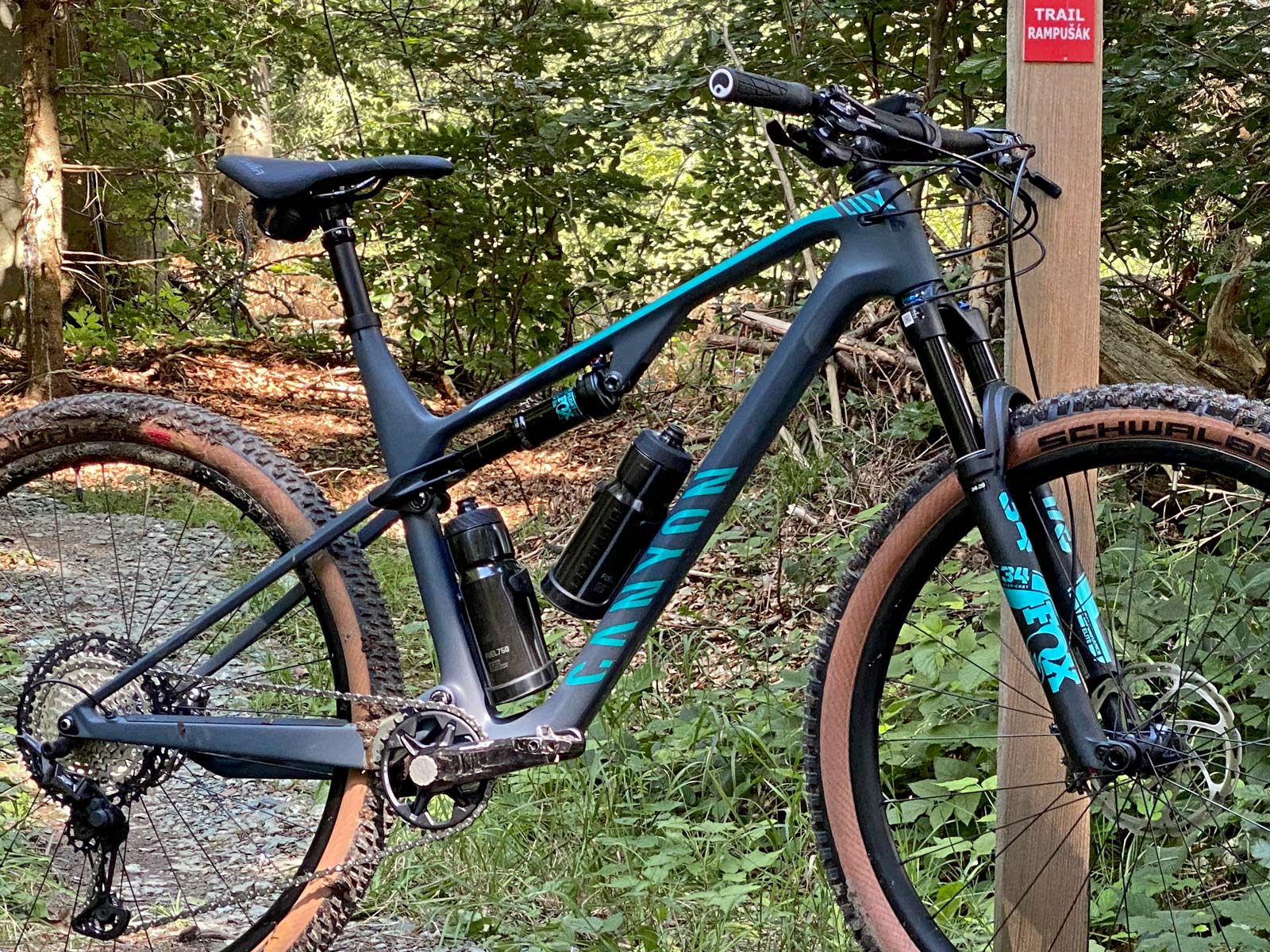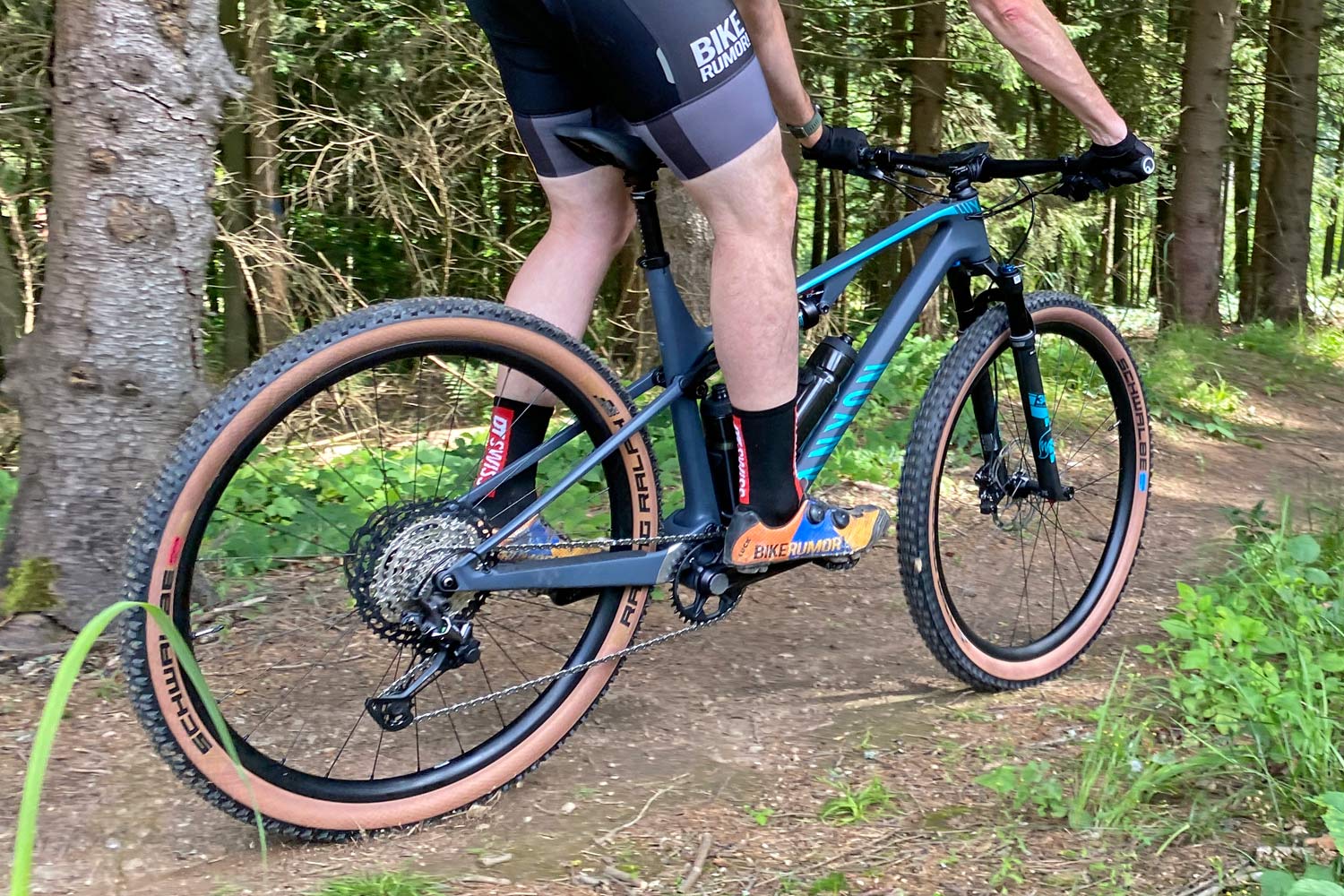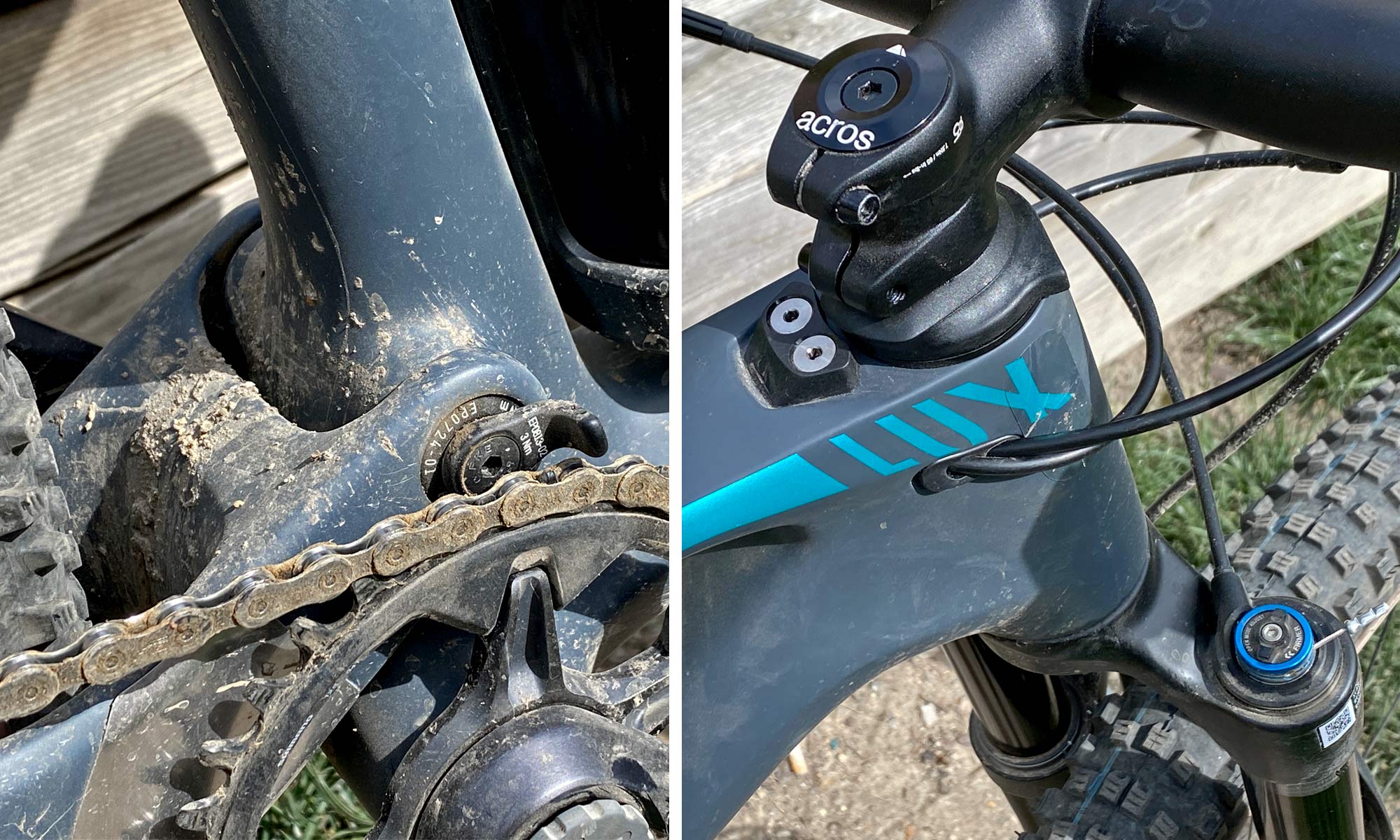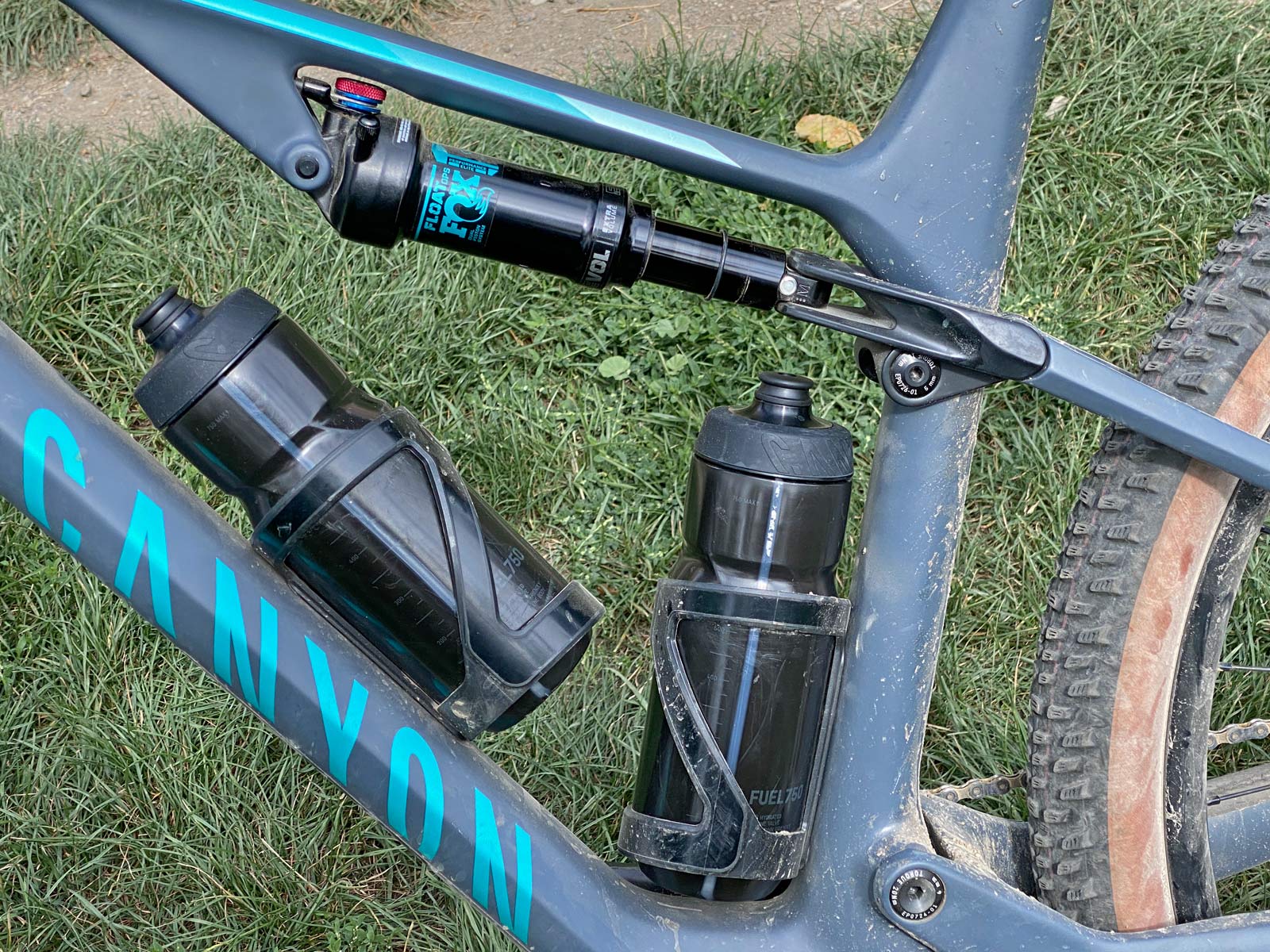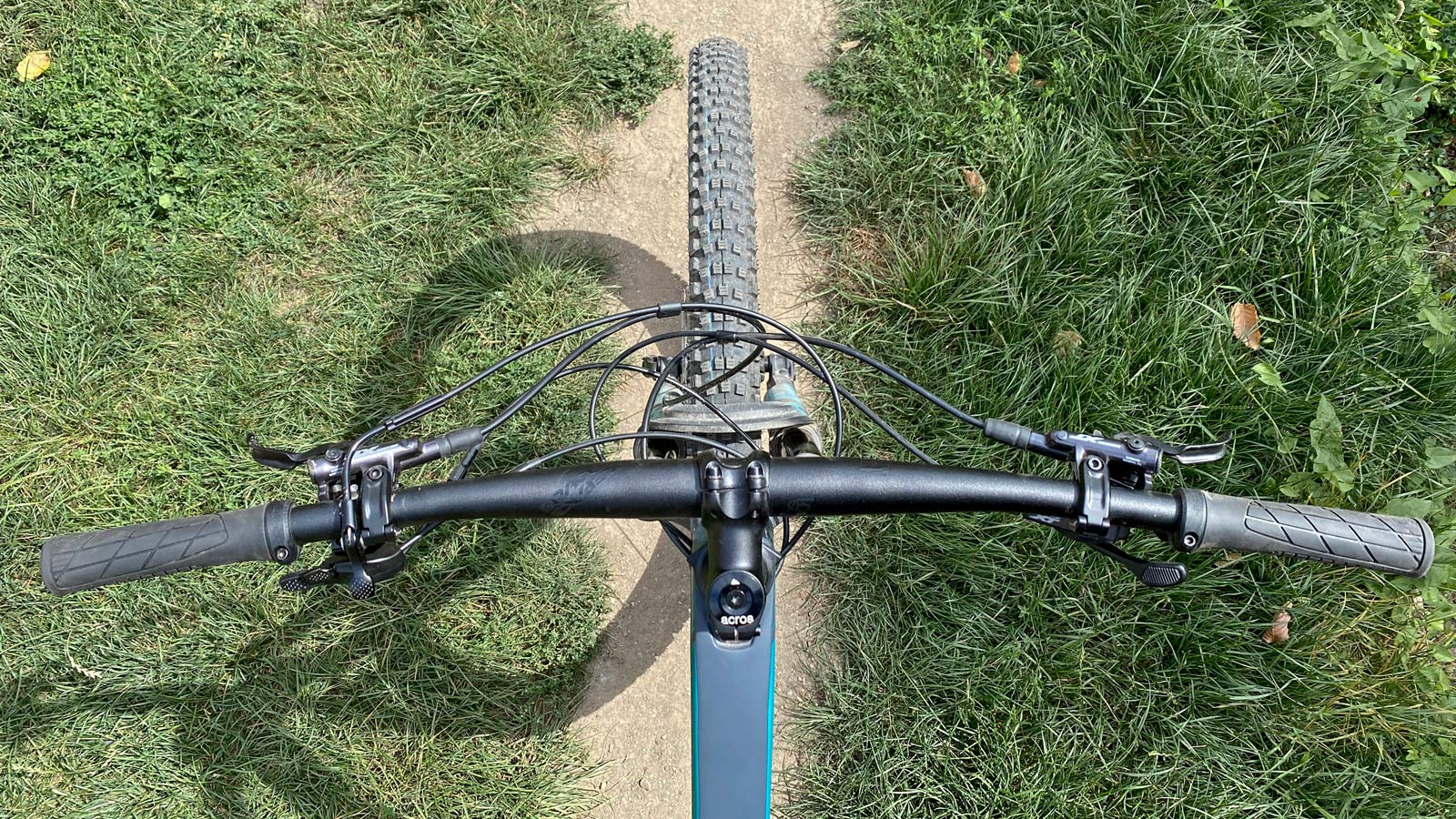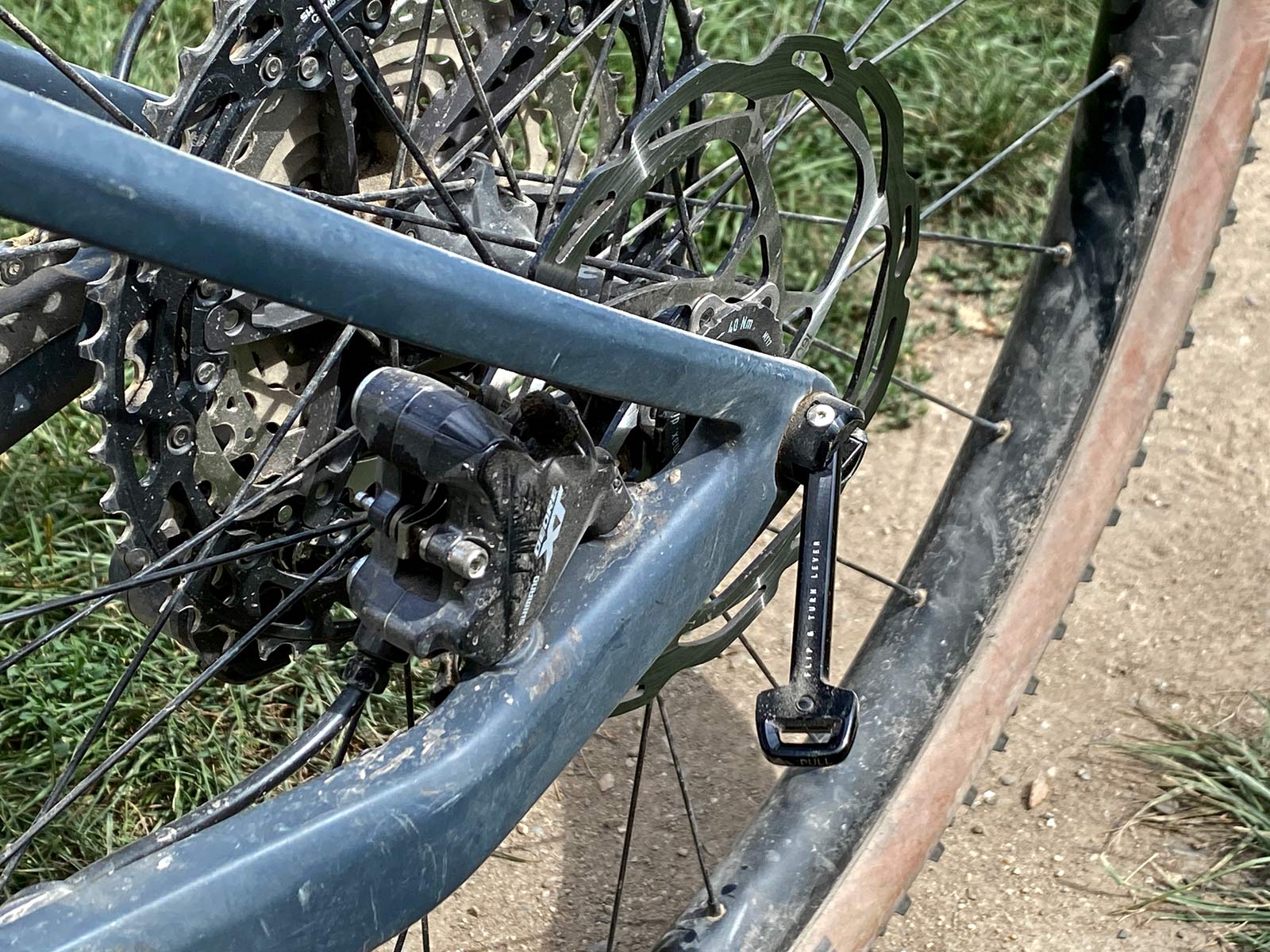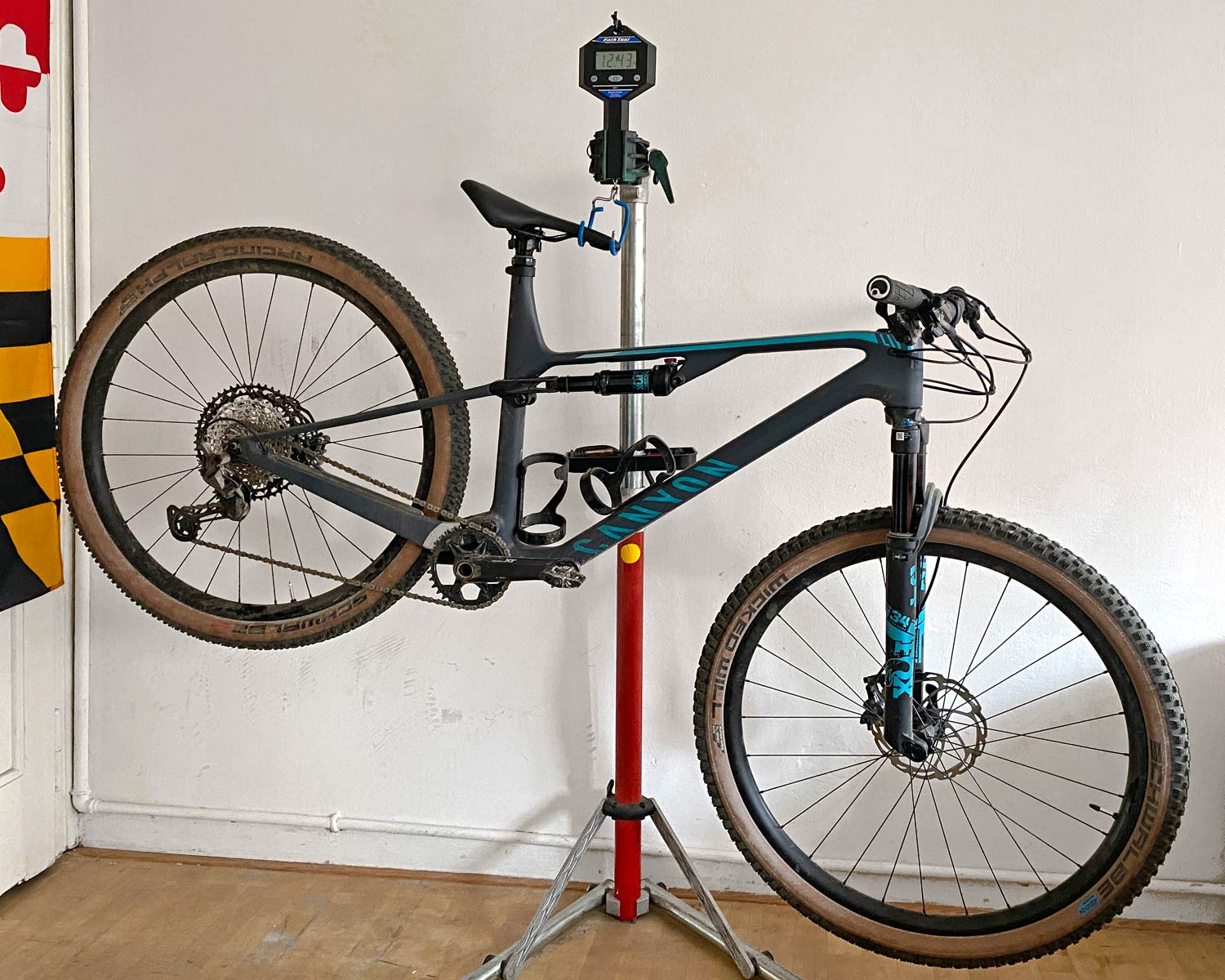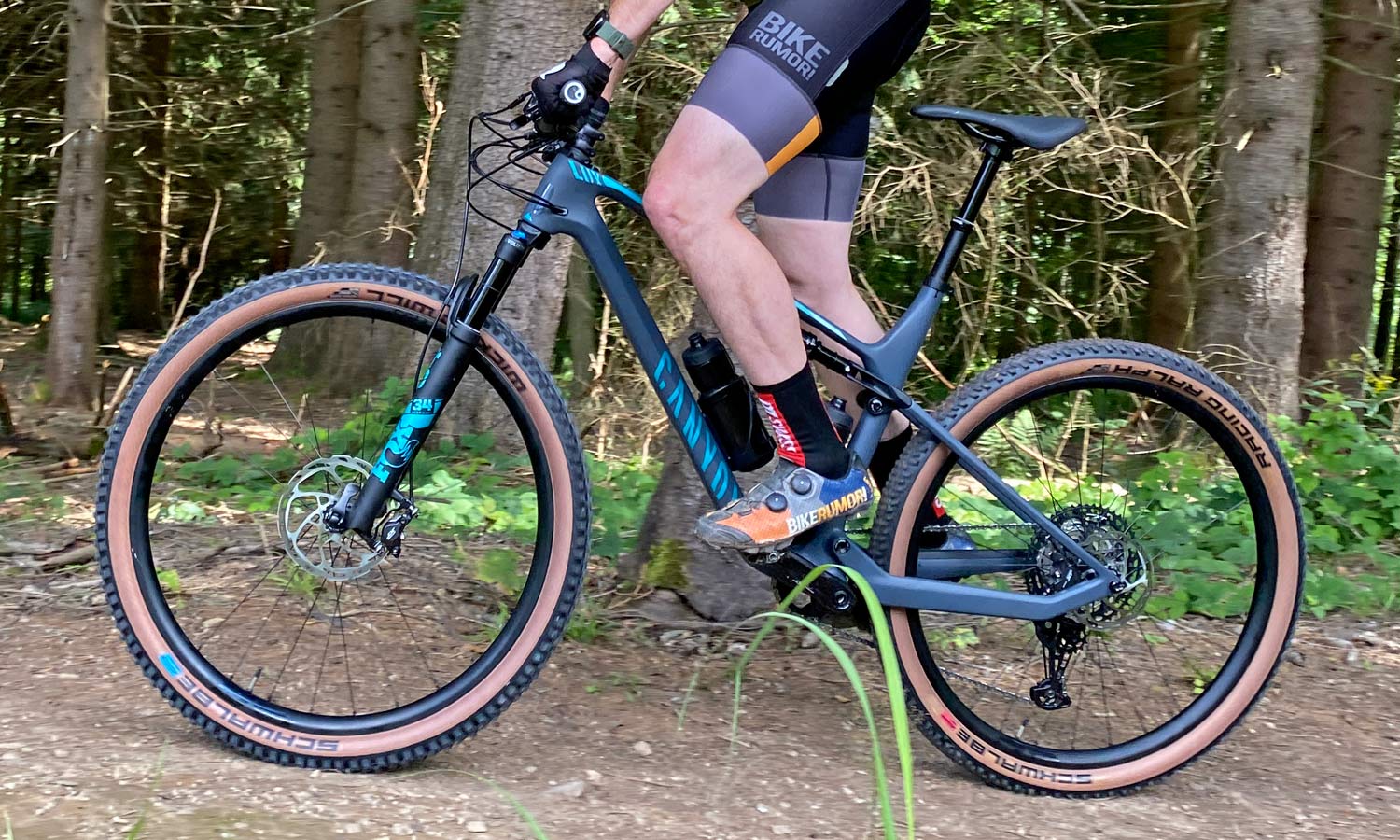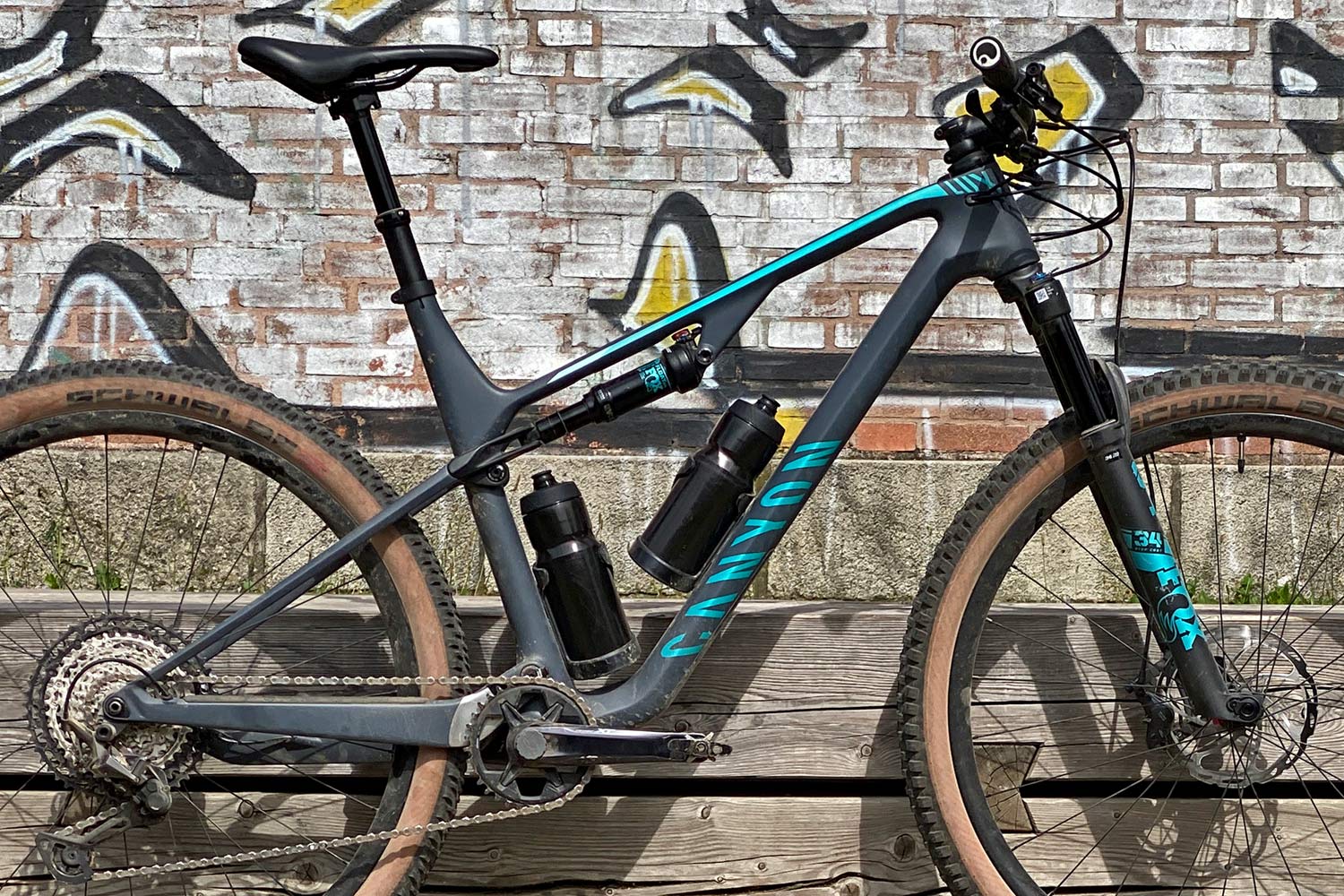Canyon’s new 2022 Lux Trail is a subtle update to their World Cup XCO-proven full-suspension mountain bike, with a bit more travel and tweaked geometry to make it more trail-ready. And while the few changes are relatively minor, they really do add up nicely to create a lightweight mountain bike that climbs well and is more fun on the descents. Whether or not we call it ‘downcountry’, the new Lux Trail is at home on a wider range of trails than ever. And it probably could still toe a race start line when you aren’t slaying singletrack on the new bike…
Canyon Lux Trail lightweight 115/120mm mountain bike
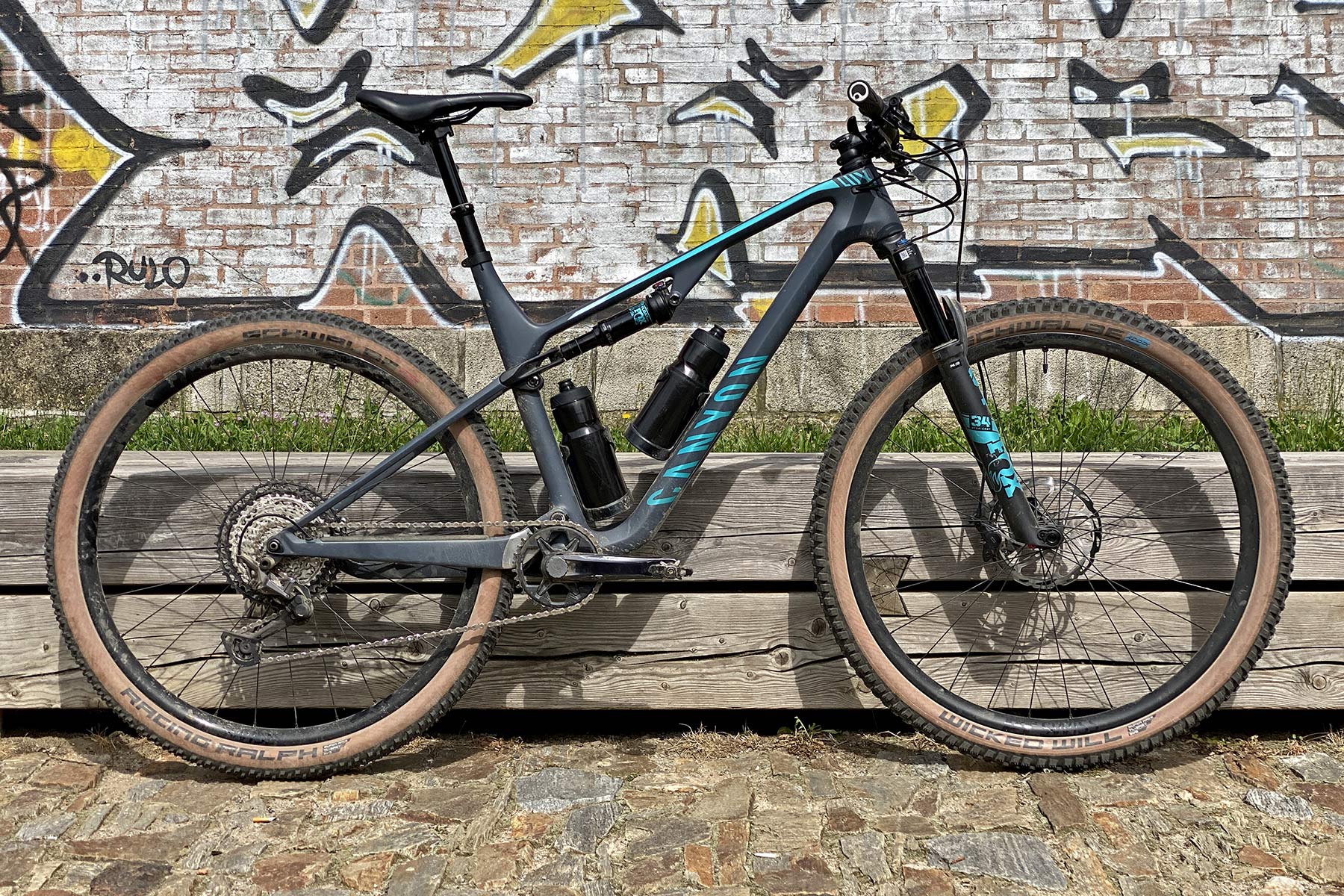
The new & slightly longer travel Canyon Lux Trail bike looks almost identical to the original 2019 Lux that I first rode three years ago. So similar in fact, that I didn’t have to worry about being secretive while test riding it for the last few weeks before the new version was announced. Side-by-side only the new paintjob & a bit less kink in the toptube might give it away. At a glance, no one’s going to really notice an extra 10mm of travel front & 15mm in the rear.
Three years ago when I rode the original Lux in one of its lightest (10.5kg), most expensive, and shortest travel (100/100mm) versions… I came away impressed with how well it climbed & descended. This bike seems to have kept all the best of that, and made going down hill more fun.
In simple terms, only the front triangle of the Canyon Lux Trail is new, but there’s enough there to completely reshape how this bike rides.
What’s actually different?
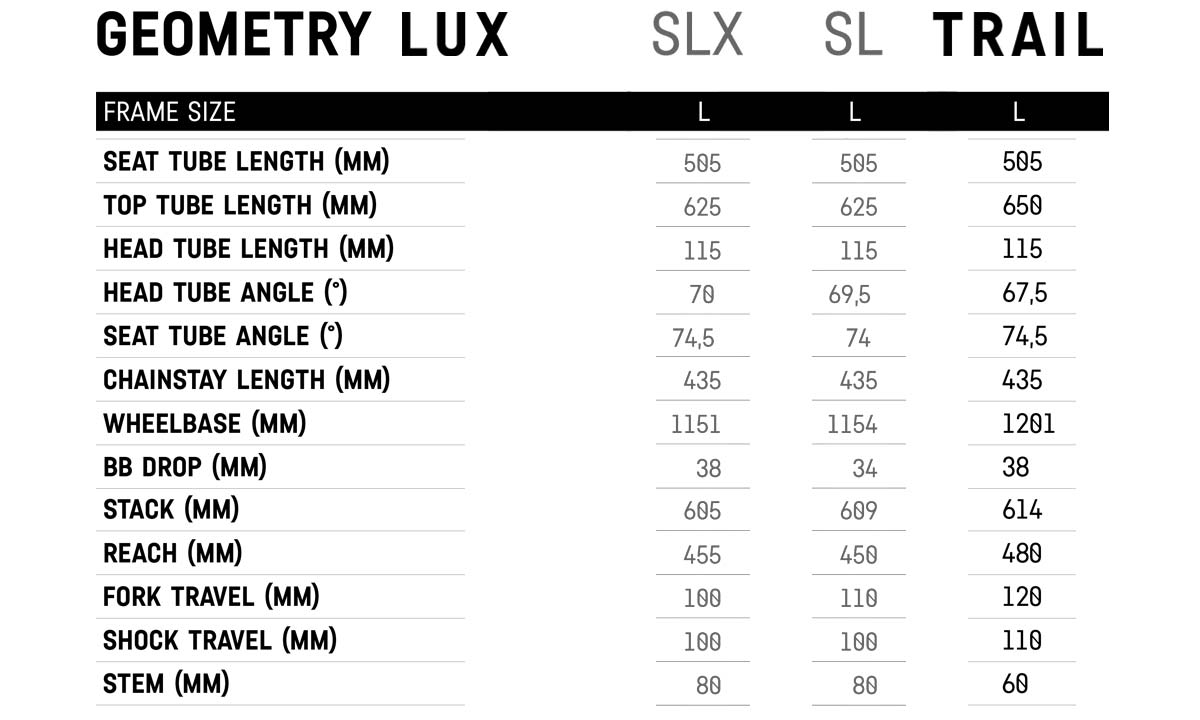
A bump up to 115mm of rear wheel and 120mm of fork travel is the essence of the Lux Trail update, paired with 25mm more frame reach and a noticeably slacker head angle – a full 2.5° slacker than the SLX which shares the same BB drop & seat angles.
Canyon has mostly been comparing the new Lux Trail CF to the original Canyon Lux CF SLX to highlight the different character from their World Cup XC race bike to this more versatile light-duty trail bike. But let’s not forget that there already was a ‘light trail’ version from the start with the Canyon Lux CF SL with 100mm of rear wheel travel paired to slightly longer 110mm forks.
The SL & Trail are also a better comparison as this new bike shares the less premium carbon layup coming out to a 1895g Lux Trail CF frameset weight claim with hardware, vs. the 1852g claim of the Lux CF SL. Why is it heavier with the same layup? Canyon says it comes down to simple geometry – the longer front triangle has more material in it.
But Canyon decided the lower BB & steeper seat angle of the SLX race bike would be even better starting point for the added travel and longer & slacker front end.
Tech details
The bike uses the same single-pivot suspension with flex in the stays and a pair of small linkages to drive the shock. The 1x only bike builds a small chain guide into the main pivot, behind which a chainstay bridge provides rear end stiffness and a path for the internal cable routing… but also a gap to fill up with dirt & debris thrown off the rear tire.
Up front modular cable ports route housing into the headtube. And the Impact Protection Unit (IPU) limits bar rotation to keep from damaging the frame in a crash. I actually tested it out a bit one time I hopped off the bike. And I found that if the steering stopper isn’t tight enough on the steerer, it’ll still rotate negating any benefit. It just seems to add an extra bolt to have to manage when adjusting your headset. In any case, like Canyon’s XC pros do, it is easily removable, too.
Again there’s room for two large water bottles in every frame size. You can ride farther without a bag on your back. There was still plenty more room inside my large test bike’s front triangle. So I’d likely look to a solution that included a tool carrier/bag above or below the downtube bottle.
The Lux Trail tucks its shock quite tight up under the thinned toptube. All of the complete Lux Trail builds include internally routed remote lockouts, and Canyon is said to have worked on custom lockout linkages for Fox & RockShox to keep everything tidy (but there’s not tons of room left to get your fingers on the adjuster knobs.)
Component Highlights
There are more external cables than we’re used to leaving a slightly crowded cockpit with all those lockouts plus dropper remotes. The lockout remote is in a position we’ve become accustomed to for droppers, so I more than once hit the wrong control to drop my seat vs. lock out the shocks. The RockShox bikes get a gripshift-style twistlock remote for suspension control, which could be less troublesome.
But realistically, once you have the suspension set up properly with 20-25% sag out back, the lockout is only really a big help of steep paved or super smooth climbing. The Lux Trail, like the regular Lux before it, climbs really well with very little bob.
The back of the Lux Trail is completely unchanged. The new bike shares the identical rear triangle from the Lux CF SL. You get the integrated hide-away Quixle thru-axle and road-style flat mount disc brake.
My EU-spec Lux Trail CF 7 comes with the 100mm travel Fox Transfer SL dropper, which feels like not quite enough drop for real trail riding. The post has only two positions – full up or full down, which I can’t really get used to after riding infinitely adjustable hydraulic droppers. It also seems a bit finicky for much lower seatpost clamping force than the frame’s clamp is rated. In any case, the RockShohox bikes get longer 125mm droppers, and the US-spec Shimano bikes get pleasantly longer 150mm droppers instead.
Actual Weight
The bike I’ve been riding since the start of August is the middle-spec 2022 Canyon Lux Trail CF 7 with a complete XT 1×12 groupset, DT carbon wheels, Fox Performance Elite level suspension, and a pricetag of 4300€. Canyon claims a complete bike weight of 11.7kg. My test bike with a pair of 340g Crankbrothers Candy 3 pedals, 100g of Canyon sideloader bottle cages weighed in ready to ride at 12.43kg/27.40lb with sealant in the tires (<300g more than claimed.)
For comparison that’s almost 2kg more than the short travel race Lux I’d tested before, but surprisingly not really any heavier than a similarly-spec’d or similarly-priced version of the still shorter Lux CF SL.
(In a shout out to a concerned reader from 3 years back, I hung the bike with the dropper down. Usually a no-no, this short 100mm Fox Transfer SL dropper is all mechanical so no IFP to worry about.)
Riding Impressions
My size large test bike got 25mm more reach and longer toptube length (apparently just +20mm on smaller sizes), which a 20mm shorter stem brought back to an almost negligible difference in on the bike fit. But all the extra travel (+10mm out back & +20mm up front) vs. the Lux SLX I tested before, meant this new Lux Trail ended up with a 50mm longer wheelbase in addition to the 2.5° slacker headtube. (Even with the 20mm extra travel, the new bike’s stack was only 9mm higher. All I needed to do was pull one steerer spacer to get my bar in the same position.)
The longer wheelbase & slacker front end certainly feels balanced when riding trails at speed, and more confidently stable when the trails get technical. That likely is aided by the fact that my weight sat even lower than on the 100mm bike. The Lux Trail position was essentially the same as the 100mm Lux, before sitting a bit lower with its additional sag.
There’s no more tire clearance than before (Canyon rates it up to 2.4″ on 30mm internal rims). But the Trail bike builds get beefier tires, without going overboard. The Lux Trail moves from 2.2″ XC race tires before, to a more trail-ready Schwalbe 2.4″ Wicked Will / 2.35″ Racing Ralph tire combination, still with a light Super Race TLE casing. I managed to push them to their limit on the roughest & rockiest trails, but they seem a good fit with the bike for versatile trail riding.
Final Thoughts on riding the new Canyon Lux Trail
Canyon calls the new Lux Trail a “light, fast, and capable” bike. It definitely feels like an improvement over the original, delivering much more technical trail riding capability without any real noticeable sacrifice in pedaling or climbing efficiency. No surprise that this bike is a bit heavier than the 100/100mm XC race version of the Lux that I rode last.
But I feel like that extra weight is actually where you want it, in a stiffer fork, a bit more forgiving travel, more capable tires, and of course more stable slack geometry. It is still a light bike at around 12kg, but now it even more fun when the trails get steep & rough. The standard Lux is still a good option if you are looking for a race-only bike. But the Lux Trail will open up more places to ride, from smooth singletrack to boundary-pushing technical trails, too.
Want more details on the Lux Trail launch? Check out our detailed tech article here.
